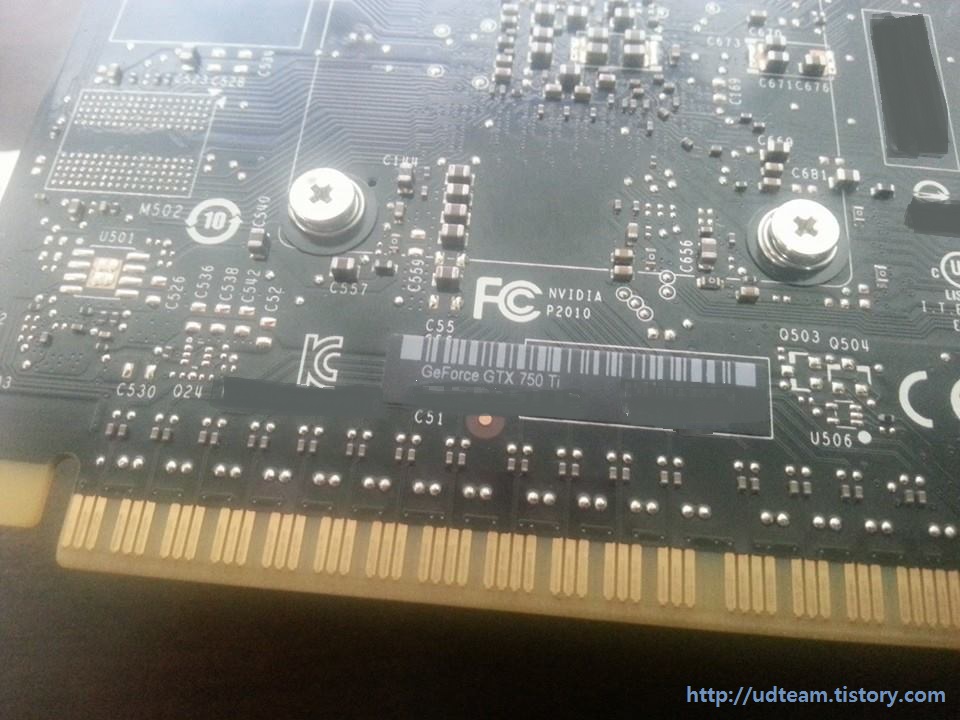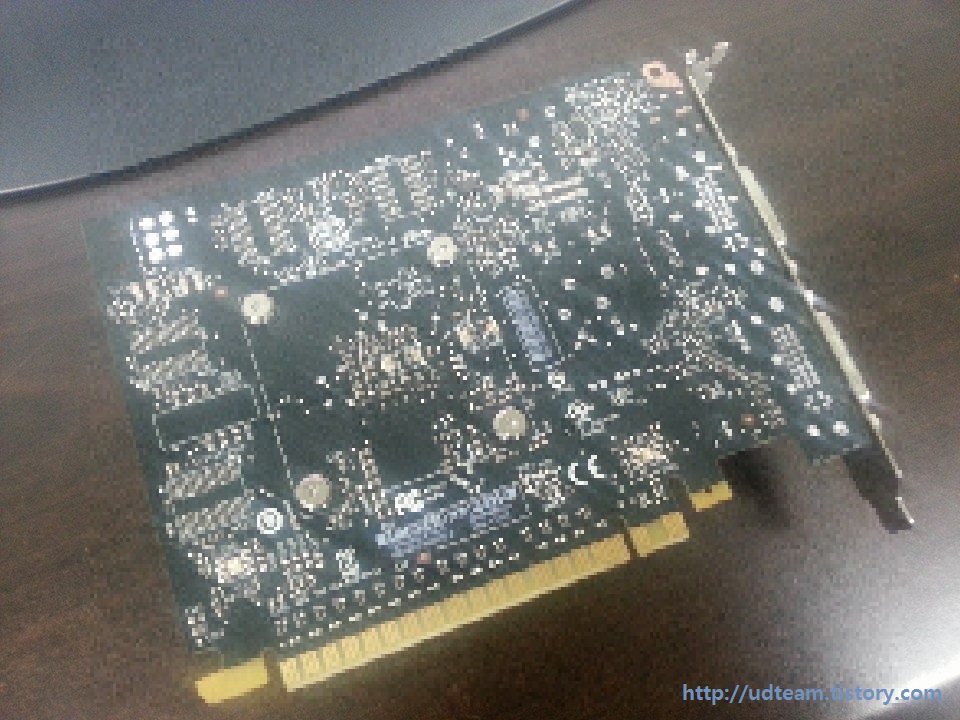In Pictures: GeForce GTX 750 Ti PCB
Nvidia's GTX 750 Ti might carry a 6-pin PCIe power connector after all.
Not long ago we reported that the GTX 750 and GTX 750 Ti graphics cards from Nvidia would be based on the GM107 GPU, and while this is still seemingly correct, we were wrong about something.
Previously, we reported that the GTX 750 Ti might not have any PCIe power connectors; this is seemingly wrong. A post on DG's Nerdy Story has revealed the rear of the PCB of a GTX 750 Ti, which clearly shows solder points for a single 6-pin PCIe connector. The first image shows this clearly, while the second image clearly shows the GTX 750 Ti text on a sticker on the graphics card.
Having said that, it is very possible that this was not a reference card. Many manufacturers are likely to opt for equipping their cards with 6-pin PCIe power connectors anyway, which is understandable. The reference card is said to feature a power envelope of 75 W, which is right on the limit of what the PCIe port can provide. In order to support factory or user overclocking, it will be safer to have a margin of error.
As with any pre-release rumor, consider these images with some skepticism. The solder points aren't shown very clearly, and only the back of the card is pictured. It's plausible that Nvidia could be working on another product using this PCB requiring more power than a PCI Express slot can provide (75 W).
It is unclear whether the GTX 750 will or will not have a 6-pin power connector at this point.
The GTX 750 Ti is expected to make its debut on February 18, along with the GTX 750.
Get Tom's Hardware's best news and in-depth reviews, straight to your inbox.
Niels Broekhuijsen is a Contributing Writer for Tom's Hardware US. He reviews cases, water cooling and pc builds.
-
mapesdhs Just a small note - when you do a review of this card, you could please includeReply
the odd older card so we can have some idea of how the entry range of cards
has progressed at this point? For example, will the 750/750Ti be any better
than a GTX 460 or 560, etc.? I've noticed a lot of reviews don't include any older
cards, which makes it a bit difficult for those who have such cards to guage
whether an upgrade within a limited budget is worthwhile.
Ian.
PS. Posting a comment from the main page still results in utterly mangled text.
It's been months now and this still hasn't been fixed. One has to go to the UK
site to edit the text so it's readable again.
-
Sangeet Khatri Reply12665196 said:Just a small note - when you do a review of this card, you could please include
the odd older card so we can have some idea of how the entry range of cards
has progressed at this point? For example, will the 750/750Ti be any better
than a GTX 460 or 560, etc.? I've noticed a lot of reviews don't include any older
cards, which makes it a bit difficult for those who have such cards to guage
whether an upgrade within a limited budget is worthwhile.
Ian.
PS. Posting a comment from the main page still results in utterly mangled text.
It's been months now and this still hasn't been fixed. One has to go to the UK
site to edit the text so it's readable again.
Hey, I was also getting very weird text running Google Chrome on Puppy Linux, I figured out a workaround for myself, using "Stylish Extension for Chrome" and making this custom script for every website that is affected by this problem (uptil now only two).
Here is the code if you want to fix that (not complete fix, but it works.) :
@-moz-document domain("tomshardware.com")
body
{
font-size:13px !important;
letter-spacing:1px;
}
}
Edit : I made an easy to install script : http://userstyles.org/styles/98162/tomshardware-font-fix -
@MapesdhsI have the 650Ti Boost card which one of these should be replacing and I get better performance than a gtx 460/560 so I'm sure this card will be alot better performance wise.Reply
-
dragonsqrrl While I wouldn't be surprised if it has a 6-pin power connector, merely confirming the presence of solder points on the rear of the PCB doesn't necessarily mean there's a power connector on the other side. There have been many examples of unused solder points on graphics cards in the past.Reply -
CaptainTom Man if it didn't require a 6pin it would bring crazy good performance to low power builds. At the very least they should make a version of the card that doesn't require one...Reply -
sykozis If the card only uses 75watts....having a 6-pin connector there makes no real difference. Simply plugging in a 6-pin PCIe Aux Power cable doesn't increase the amount of power the card draws. It simply ensures that the card has adequate power in the event that someone tries to overclock it...The card is only going to draw what it actually needs.Reply -
wdmfiber Reply
Hopefully we're spared that comparison.12665196 said:Just a small note - when you do a review of this card, you could please include
the odd older card so we can have some idea of how the entry range of cards
has progressed at this point? For example, will the 750/750Ti be any better
than a GTX 460 or 560, etc.? I've noticed a lot of reviews don't include any older
cards, which makes it a bit difficult for those who have such cards to guage
whether an upgrade within a limited budget is worthwhile.
Any attempt at a comparison to a 40nm card from 2010 is going to be far from an exact science. And would be meaningless to the 99% of readers who don't have the same old GPU.
Just do you own. Tom's GPU Hierarchy was built for that purpose. You can also take into account the card(s) rated graphical processing power in gigaflops, the fabrication process (nm), power consumption (watts) and the DX versions of the games you play. -
loosescrews Reply12666955 said:If the card only uses 75watts....having a 6-pin connector there makes no real difference. Simply plugging in a 6-pin PCIe Aux Power cable doesn't increase the amount of power the card draws. It simply ensures that the card has adequate power in the event that someone tries to overclock it...The card is only going to draw what it actually needs.
Not all PCI-e slots can supply the full 75W. Some motherboard makers cut corners. That is why it is a good idea to have the 6-pin connector.


